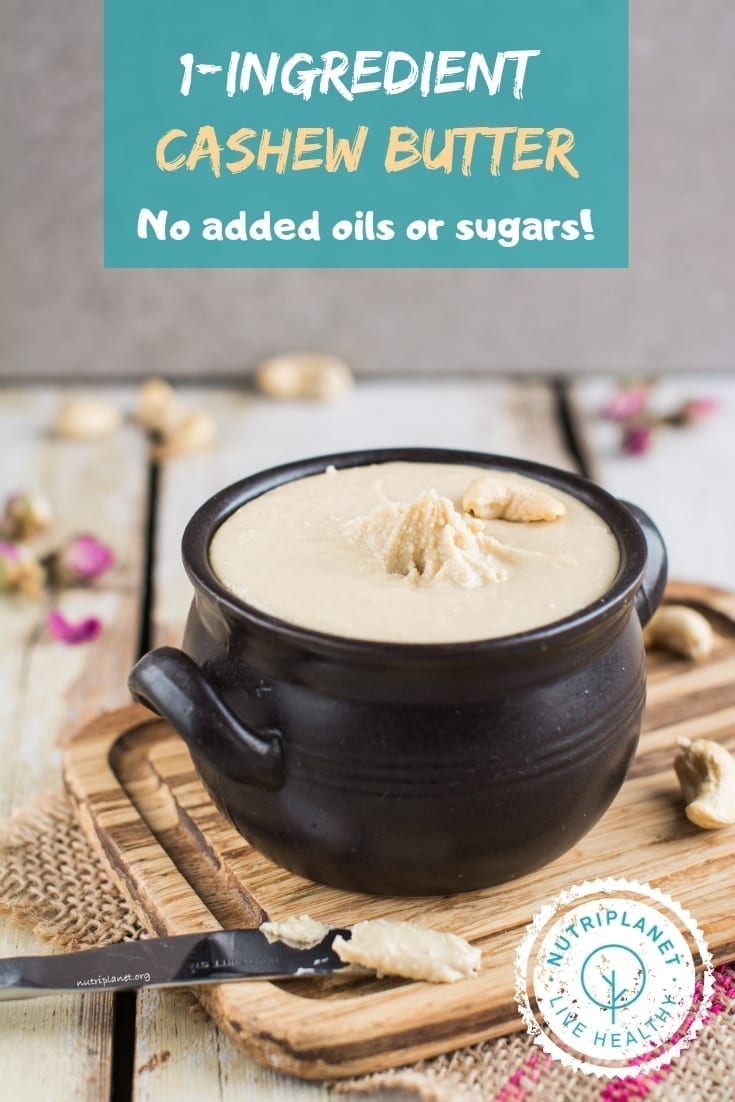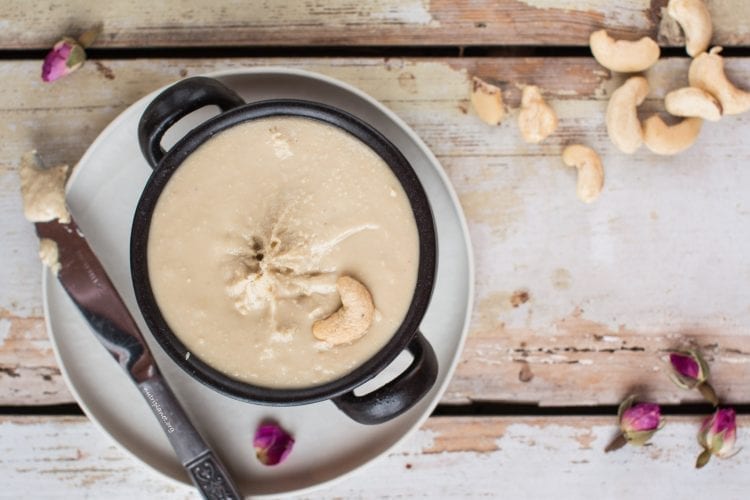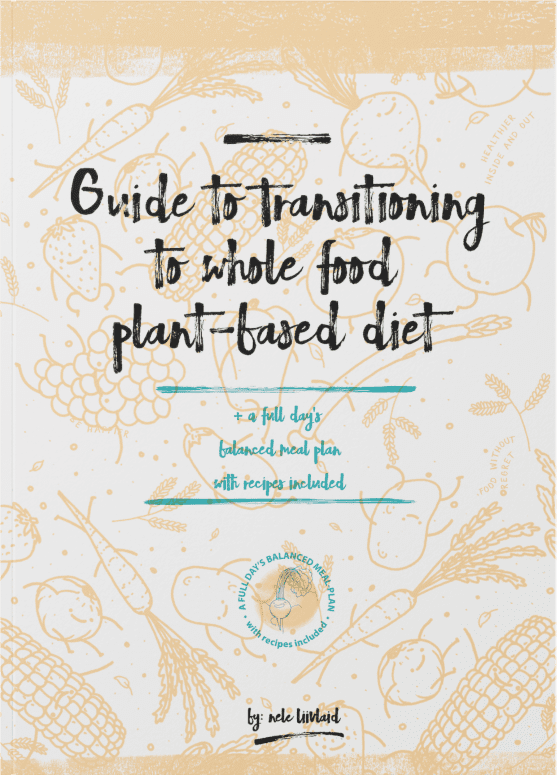You only need 1 ingredient and a food processor for this smooth and creamy homemade cashew butter recipe. Enjoy your cashew butter with no added oils or sugars and pay half as much compared to store-bought varieties!
As you might have understood, the only ingredient in this cashew butter recipe is cashews 🙂 Now, this fact needs to be emphasized because I’ve seen many recipes and tutorial videos for nut butters where coconut oil is added to the nuts. In my opinion, adding oil to already fatty nuts is totally insane! I understand that this might be done to facilitate the process, but you only need some patience and the oils in the nuts will start to separate resulting in nicely smooth and creamy butter (without the added oils).
Make sure to scroll to the end as this post is packed with information:
- Tips for buying and storing nuts and seeds.
- Why I prefer organic nuts and seeds.
- Benefits of soaking nuts and seeds.
- How to soak and dehydrate cashews.
- Signs that you need to soak your nuts and seeds.
- How to use homemade cashew butter.
- And finally, why I don’t recommend roasting cashews.
- How to roast cashews (should you still choose to do it).
What to Consider When Buying and Storing Nuts and Seeds:
- First, buy organic.
- Secondly, if possible, buy in vacuum packaging.
- Thirdly, never buy loose nuts and seeds – air and light makes the oils in nuts and seeds go rancid.
- Once you open the package, store the nuts and seeds in airtight containers in refrigerator or freezer (longer storage). Chia seeds and flax seeds are the only exception, as they can stay at room temperature without spoiling. However, put them in fridge as soon as you grind them!
Why I Always Prefer Organic Nuts and Seeds
Nuts and seeds are apt to absorb pesticides readily due to their high oil content. Moreover, the amount of pesticides used for growing nuts has been consistently rising in recent years.
In addition, non-organic nuts are often treated with fumigants (gases to kill bugs) after they are picked. So, it becomes easy to see why you should be wary of them.
And finally, to kill microbial pathogens, insect pests, mould, and other spoilage organisms, manufacturers irradiate the nuts. This practice is known for potentially creating dangerous carcinogenic by-products.
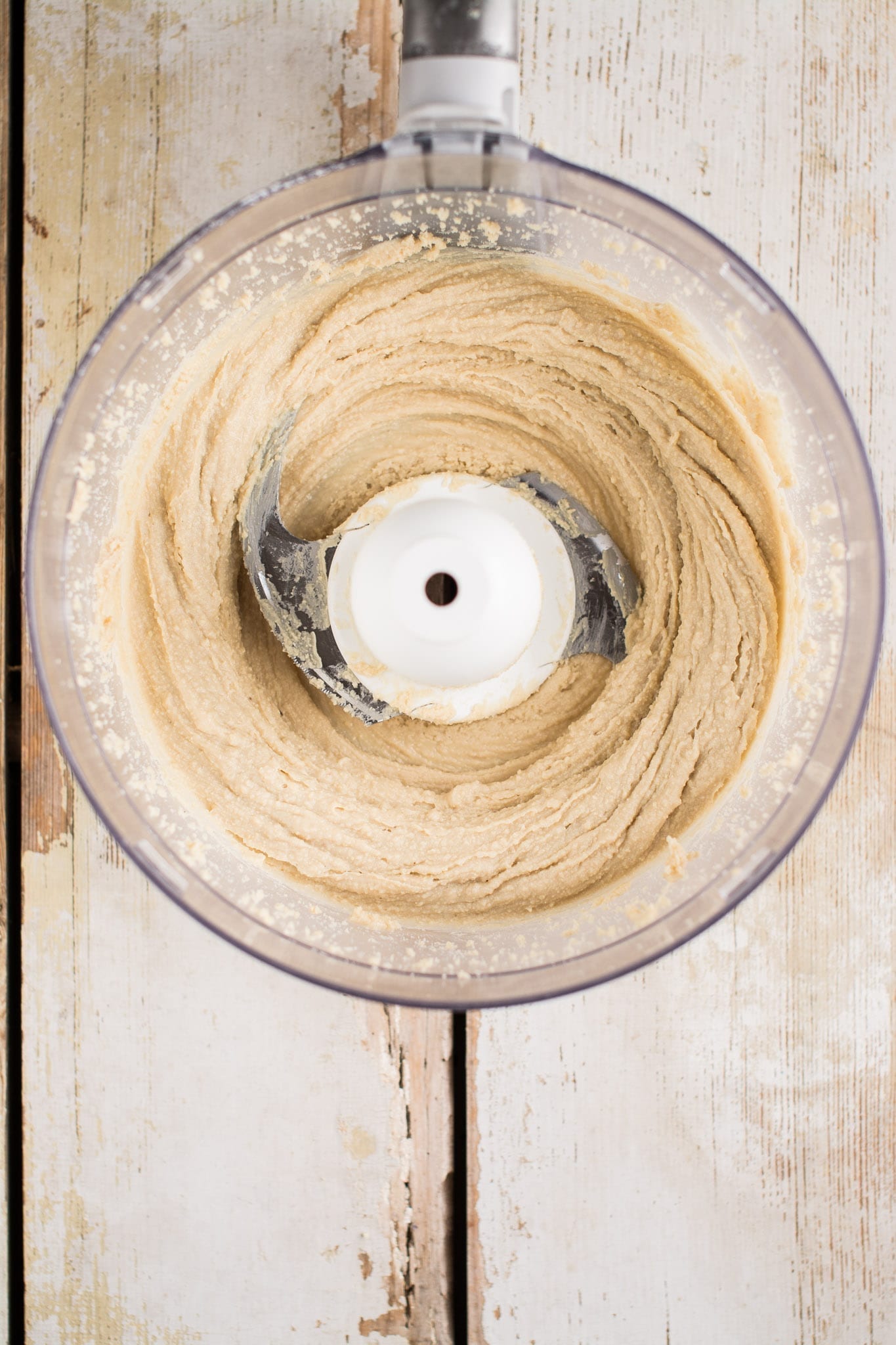
Why Soak Cashews
Soaking nuts, grains and legumes is especially important for those with sensitive digestive system. Un soaked nuts have phytic acid that inhibits mineral absorption and causes digestive ailments. However, you can easily neutralize the phytates and enzyme inhibitors by soaking the nuts in salt water (or salt and apple cider vinegar water) and dehydrating them at low temperatures.
In a nutshell, soaking is beneficial to:
- Remove or reduce phytic acid and tannins.
- Neutralize toxins in the colon as well as enzyme inhibitors and to encourage the production of beneficial enzymes.
- Make the proteins more readily available.
- Increase the amounts of vitamins, especially A, C and B vitamins.
- Prevent mineral deficiencies, bone loss and many other diseases and conditions.
- Improve flavour and texture.
How to Soak Cashews
In a nutshell, here’s how to soak cashews:
- Cover with water.
Soak cashews in glass or ceramic container in filtered water for 2-6 hours.
- Add salt or lemon juice.
Add ¼ tbsp of sea salt for each cup of nuts. Alternatively, use acidic medium such as lemon juice or apple cider vinegar – add a splash to soaking water.
- Drain and rinse.
Rinse carefully to remove salt residue.
- Dehydrate.
Let cashews dry until they are crisp again at maximum 65°C (150°F) for 12-24 hours or until completely dry. Some sources also say that it’s OK to dehydrate cashews at maximum 100°C (225°F). Make sure they are fully dry or they could become mouldy.
I have found many references to soaking nuts, grains, and seeds in water, salt water, or a warm water mixture with something acidic like yogurt, whey or lemon juice. It seems within 7 to 24 hours the enzyme inhibitors are neutralized and the anti-nutrients are broken down regardless of the method you choose.
In addition, I found another interesting tip online: peanuts, cashews and walnuts should be soaked with food-grade hydrogen peroxide, which will help you avoid the potential minor health problems associated with ingesting them. It is advised to rinse them well before consuming or dehydrating.
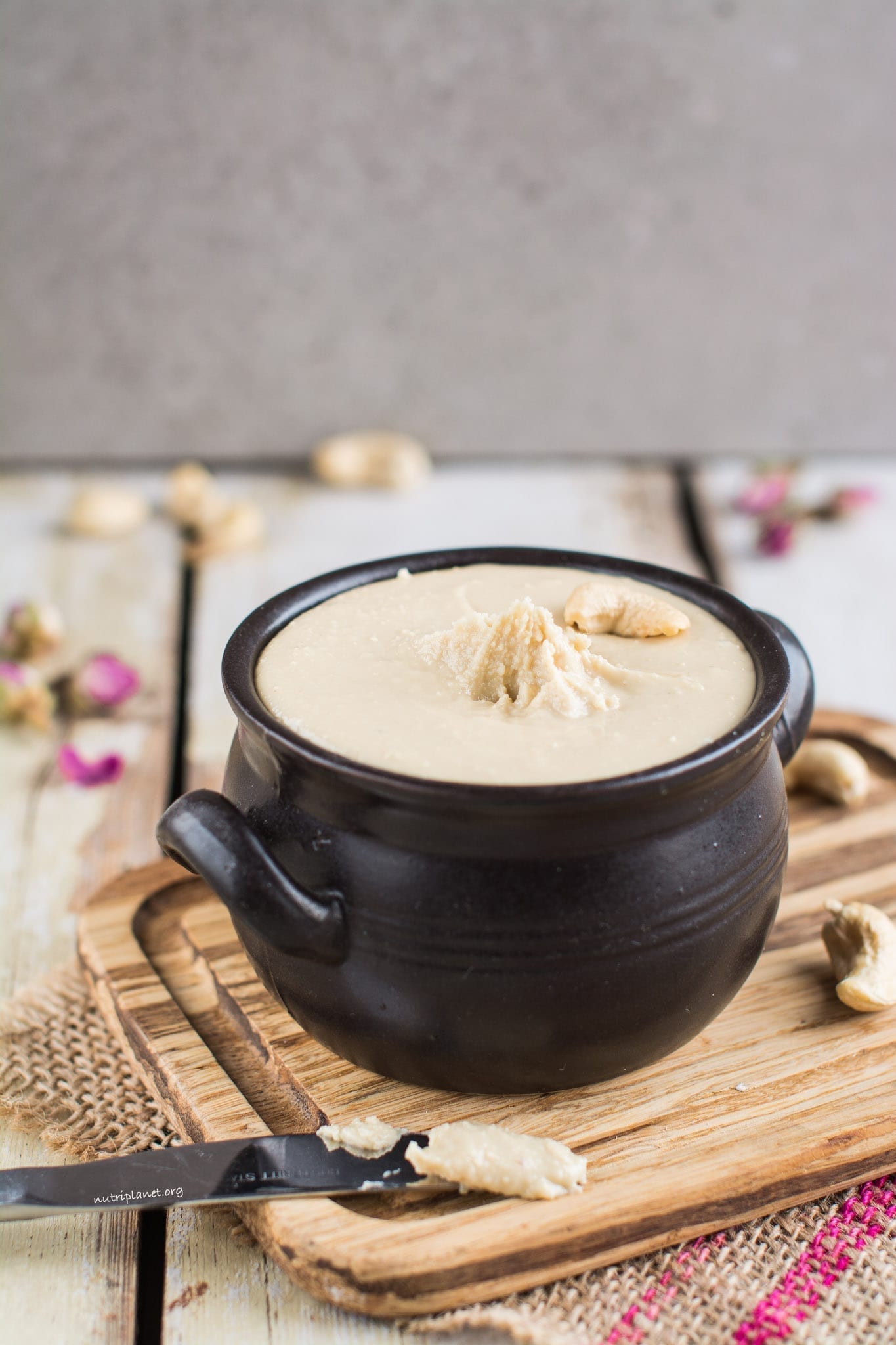
Signs That You Need to Soak Your Nuts:
- You’re having low belly pain after eating unsoaked nuts and seeds.
- You notice pieces of nuts in your stool.
- Your diet contains a lot of phytate containing foods, i.e. grains, beans, nuts and seeds?
- You’re having trouble consuming enough minerals and B-vitamins.
Finally, I’d like to start a conversation! Do you make your own nut butters? What is your favourite? Do you soak the nuts before or did you learn it from this post? I’d love to see your comment below! I also welcome you on my social media accounts Instagram @thenutriplanet and Facebook @nutriplanet.health.hub .
Print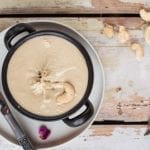
Homemade Cashew Butter Recipe
- Total Time: 15 minutes
- Yield: 400g (14oz) 1x
Description
You only need 1 ingredient and a food processor for this smooth and creamy homemade cashew butter recipe. Enjoy your cashew butter with no added oils or sugars and pay half as much compared to store-bought varieties!
Soaking time: 2 – 6 hours
Dehydrating time: about 24 hours
Ingredients
400g (14oz) raw unsalted cashews (or any other amount)
Instructions
- First, take your raw cashew nuts and soak them for 2-6 hours (see instructions above). Then, dehydrate until fully dry. You might skip the first 2 steps, if your digestion can handle the phytates and enzyme inhibitors in raw inactivated nuts.
- Next, pour the dehydrated nuts into high-speed or high-powered food processor.
- Then, start processing. Scrape down the sides whenever the cashew paste starts to stick to the walls and bottom of your food processor.
- When the oils start to separate, the half-done cashew butter will form bigger clumps and finally you’ll see one big ball of cashew paste running around the processor. Don’t stop there! Separate the ball with a spoon or spatula and continue processing. Soon you’ll see that the ball starts to come apart and the paste will look more and more like real nut butter. Process a little bit longer and you’re done! It’ll all take about 15-20 minutes, so be patent!
Notes
One tablespoon (16g, 0.60z) has 1.8 GL points.
- Prep Time: 15 minutes
- Method: Blend
Nutrition
- Serving Size: one tablespoon (16g, 0.6oz)
- Calories: 94.7 kcal
- Sodium: 1.6mg
- Fat: 7.02g
- Carbohydrates: 5.22g
- Fiber: 0.53g
- Protein: 2.91g
Tips on My Homemade Cashew Butter Recipe:
- You don’t need the latest and most powerful food processor to get the job done. Of course, it’d be much faster and easier with processors like Vitamix, but you definitely can do without. I prepare my homemade nut butters in 6-year-old 1000W powered Kenwood. I wouldn’t go lower than 1000W though – I still remember how we burnt down our first not-so-powerful blender trying to process nuts and dried fruits.
- Store your cashew butter in an airtight container in fridge.
- You can also make almond butter and peanut butter using the same recipe. However, soak almonds and peanuts for longer period of time – 8 hours.
How to Store Cashew Butter
In general, cashew butter is high in fats and low in water making it hard for bacteria to grow. [source] However, there are some differences between storing homemade and store-bought cashew butter. That’s why I will give you tips for both options.
Storing Homemade Cashew Butter
Your homemade cashew butter can last for up to a month when stored at room temperature in a clean container or jar. At the same time, you can prolong its shelf-life by putting the jar in the fridge, in which case it will last for 3-4 months.
Storing Store-Bought Cashew Butter
When I talk about store-bought cashew butter, I refer to a natural additive-free product.
In general store-bought cashew butters without additives can last for several months in the pantry unopened, and up to a month once opened.
However, put the same jar in the fridge and it’s good for up to a year if unopened, and for 3-4 months once opened. [source]
How to Use Homemade Cashew Butter
- You can spread it on your toast, waffle or pancake.
- Eat as is – this is what my kid does; he takes a teaspoon of cashew butter with nothing added to it and calls it a candy 🙂
- Mix into desserts or add into or on top of your porridge.
- Make raw candies with cashew butter and one or few of the herbal powders – cocoa, carob, mesquite, reishi, spirulina, and/or cinnamon. Add a pinch of Himalayan salt to enhance the flavours and a preferred sweetener. You won’t need to add anything for sweetness, if you’re using carob and/or mesquite, as they are naturally quite sweet.
How About Roasted Cashews?
I do not recommend roasting nuts. You should know that the soaking and dehydrating process is more careful when it comes to preserving the health benefits of nuts and seeds.
You should be especially cautions about commercially roasted nuts as they’re often flash-fried in cheap, rancid oils. While dry roasted nuts are a better alternative, they’re still exposed to exceedingly high temperatures that denature the nutrients and cause the breakdown of fats, increasing free radical capacity.
Do I buy nut butters? Yes, I sometimes do, because I’m not perfect. However, I always opt for organic raw butters, i.e. butters made from raw nuts and seeds.
Oven Roasted Cashews
Should you still consider roasting your cashews, follow this process:
- Preheat oven to 175°C (350°F).
- Spread your cashews evenly across the baking tray and roast for 5 minutes.
- Then stir them using a spoon or spatula.
- Return them to the oven and continue roasting in 3-5 minute intervals and stirring until they are done. Their colour should be a few shades darker and you’ll hear cracking and smell nutty flavour. It should take about 8-12 minutes (max 15 minutes).
- When they’re done, transfer them to another tray to avoid scorching. Use cake tin for smaller amounts – you can then easily shake them instead of stirring.
Toasting Nuts on Stove Top
Preheat a skillet on low to medium heat and toast a single layer of nuts at a time for 3 to 5 minutes. The nuts may begin toasting in less than a minute, so watch them closely and shake the pan frequently to avoid burning. If the cashews seem to be burning instead of toasting, turn the heat down a bit and lift the pan off the heat for a few moments.
If you have a pile of cashews on the skillet, you’d need to toss them constantly to assure they’re toasting evenly.
